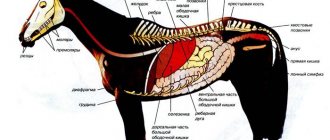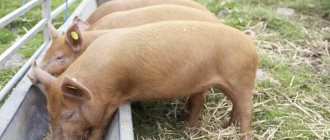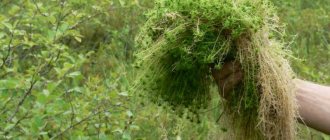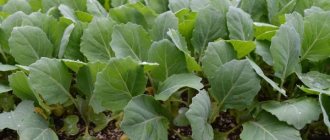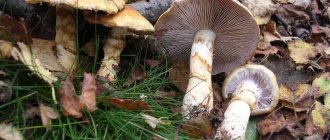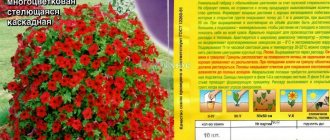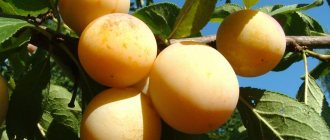One of the main conditions for successfully raising rabbits is proper and nutritious nutrition. The diet should include a variety of foods that ensure the normal functioning of the digestive system. Rabbit feed is a great help for farmers who have enough to worry about.
The composition of the various species depends on the age of the animals; choosing the right one is not difficult. Including mixed feed in the diet will help raise healthy animals. The advantage of this product is that it is developed by specialists and is perfectly balanced taking into account the needs of animals. There are recommendations on how you can prepare it yourself.
Feeding rabbits with compound feed
Many breeders feed their animals exclusively oats or other grains. With such a diet, it will be very difficult to get tasty meat and good skin. Combined feeds are fully balanced nutritional products. They contain the right amount of proteins, proteins, sodium, and other macro- and microelements.
Compound feed for rabbits varies in appearance.
You can prepare a combination food at home, but it will be difficult to maintain the proportions. At the factory, the product manufacturing process is automated: equipment measures the required amount of a specific component, then processes it and mixes it with other ingredients. In addition, in industrial production the likelihood of raw materials being damaged by toxic fungi is reduced to zero.
Homemade feed
Mixed feed prepared by yourself is cheaper than purchased and allows you to change the recipe at your discretion. To make compound feed for rabbits with your own hands, you need an extruder. The device is not cheap, but you can always find a used one.
Manufacturing process
Some breeders make do with a mixer, a meat grinder and a feed granulator. Instead of a granulator, you can use a drill and an attachment for mixing cement. Pelleted food is higher in calories, which means rabbits gain weight faster.
The manufacturing process begins with grinding grain and other components, which are then mixed and placed in a granulator. The size of the granules depends on the size of the nozzle used. The extruder mixes, shapes and heat treats all ingredients. The granulator works like a press; the feed it produces is stored less than after heat treatment.
According to user reviews, feed produced by an extruder has increased enzyme activity and high digestibility.
Animals receive higher quality food, which, moreover, is required in half. Another plus is that the high manufacturing temperature will free products from toxins and harmful microorganisms.
Complete mechanization of the feed creation process is impossible without a feed granulator or extruder, grain crusher, oil press, dryer or hay chopper and brush cutter. A walk-behind mower is relatively inexpensive and helps produce large quantities of hay with less physical effort. A dryer is needed for high-quality drying of hay, without mold or mustiness. Using a crusher, grain is processed into flour. A screw oil press crushes oily crops.
Complete mechanization of the feed creation process is impossible without a feed granulator or extruder, a grain crusher, an oil press, a hay dryer and chopper, and a brush cutter. A walk-behind mower is relatively inexpensive, but it helps produce a large amount of hay. A dryer helps avoid mishaps when drying herbs. The purpose of the grinder follows from the name: with its help, the grass is turned into a mixture. With the help of a crusher, grain is processed into flour. A screw oil press crushes oily crops.
Benefits of rabbit feed
The composition of feed for rabbits is completely balanced. The farmer will no longer have to purchase additional vitamin supplements for the normal development of animals. The rabbit will eat the feed without additional processing. When feeding oats or other grains naturally, it is advisable to soak the grain, otherwise the nutrients will not be fully absorbed.
Advantages of feeding with combined feed:
- Rapid fattening of animals raised for meat.
- Simple transportation and storage of nutritional mixtures.
- Reducing time spent on farm maintenance.
- Ideal ratio of proteins and other nutrients.
- Reducing the risk of developing gastrointestinal diseases in animals.
- Maintaining normal animal health throughout the entire life cycle.
Composition of complete feed
Up to 45% of the combined feed consists of ground grain crops. Ready-made mixtures are made from oats, corn, wheat, and barley. A large percentage of the grain group is found in feed for young animals and females during lactation.
Compound feed for rabbits.
There are 4 groups of rabbit feed composition:
- Weaning. The product contains substances that help strengthen the growing body of rabbits. The overall calorie content of weaning feed is low.
- Fattening The mixtures are characterized by increased calorie content and high protein concentration. When feeding a rabbit with food of this category, you should strictly adhere to the standards specified by the manufacturer. Failure to follow the manufacturer's recommendations will result in the fat layer starting to increase instead of meat.
- Lactation. This rabbit feed contains more vitamins and microelements. Females use it not only while feeding their young rabbits, but also during the first month after weaning the offspring.
- Medicinal. While raising animals, many farmers face various veterinary problems. Medicinal feeds contain vitamins, microelements, antibiotics and other drugs designed to combat the most common diseases. also produces health-improving mixtures according to individual requests.
The compositions of feed for industrial and shed breeding will also differ. In the second case, animals will need less fiber and more protein. Rations will be seasonal. Traditionally, the energy indicators of winter mixtures will be higher than summer ones.
For rapid growth and gain of muscle mass, the following is added to the feed:
- soybean meal;
- wheat bran;
- vitamin-herbal flour;
- sunflower and soybean cake;
- meat or fish meal (no more than 5% of the total composition).
In addition to the vitamin-mineral complex, chalk, table salt, and premixes are added to the mixture.
How to feed rabbits with compound feed
Not all farmers know how to feed rabbits. It is not recommended to suddenly switch an animal to ready-made nutritional mixtures if it previously consumed grain and other natural products. In this case, you need to feed the rabbit with compound feed 2 times a day. Green food can also be mixed with ready-made pellets and given 2-3 times a day.
When switching to balanced combined feeds, animals are fed 3–4 times a day. Animals must be provided with constant access to clean water. It is recommended to clean the drinking bowls of any remaining dry mixtures every 3-4 days. Sometimes situations arise when the animal refuses to eat the finished product. In this case, the granules can be soaked.
Daily feed rate
How much feed a rabbit eats directly depends on its breed, weight, age, and physiological state. Animals are rarely fed exclusively combined feed; farmers often practice mixed feeding. The consumption of ready-made mixtures will be less. Professional veterinarians recommend introducing premixes into the diet when mixed feeding. They will help strengthen the immunity of animals and prevent the development of vitamin deficiency.
When choosing feed, you should take into account the age of the rabbits.
With mixed feeding:
- In summer, the amount of green food will be 450–550 grams per day, and the concentrated mixture will be 60 grams.
- In winter, animals are given 200–250 grams of fresh food, 110–160 grams of hay and 60–70 grams of mixture.
- Pregnant rabbits are given 600–750 grams of fresh food and 80–90 grams of concentrated mixture.
- During lactation, the amount of green food increases to 1.5 kg per day, and mixtures - to 160 g. Hay is also added to the diet (250-300 g).
When feeding ready-made mixtures, the feed rates for the rabbit will be different:
- Adults - 110–120 g.
- Young animals - 50–60 g.
- Pregnant females - 140–150 g.
- Lactation period - 300–350 g.
The amount of food for females is determined by the number of rabbits. As birth approaches, the amount of combined feed should be increased. The average daily feeding rate for rabbits is 90 grams. This is exactly the amount of ready-made dry mixture that should be given to an adult animal daily.
Little rabbits who are still fed from their mother should not be limited in the consumption of dry mixtures. The diet of young animals during the period from 1 to 3 months should be the same as that of rabbits during lactation. At 4 months, animals are transferred to special feed for weaning or fattening.
Some breeders give their animals pork feed instead of rabbit feed. It is not advisable to do this. Despite the fact that animals quickly gain weight on pig formulas, due to an excess of protein, the liver and kidneys are overloaded. As a result, the life expectancy and activity of producers is sharply reduced.
Concentrated
Concentrates are most often made from grain crops. For this use:
- wheat;
- oats;
- soy;
- barley;
- corn.
Grains can be fed separately or as mixtures. It is recommended to thoroughly clean the raw materials and monitor their quality. You should also pay attention to possible protein intolerance in legumes. In large quantities, they can cause bloating and flatulence.
Before serving, it is recommended to soak the grain for three hours in warm water.
Feeding the rabbit only with compound feed
Feeding is considered the basis for keeping rabbits. The success of the whole business will depend on how correctly you prepare the diet for your pets. If you have the wrong approach to nutrition, you will not be able to get tasty meat or high-quality skin.
Remember! The diet of the livestock must be complete! It should include hay, greens and a combination feed. So, feeding a rabbit with compound feed is not only possible, but also necessary.
Compound feeds vary in their composition.
Combined feeds are very convenient to use. Their advantages are:
- rate of weight gain;
- the presence of a balanced amount of nutrients;
- ease of storage;
- easy transportation;
- the presence of an ideal energy-protein balance.
Grain is considered one of the main products used to feed these animals. Experts prefer oats, but each grain is good in its own way. Why do breeders choose oats? This cereal contains a lot of nutrients. At the same time, it remains dietary. When using it, there is no need to worry about obesity in the breeding stock.
During fattening, it is advisable to use corn. It promotes rapid weight gain. This approach significantly reduces the fattening period, and the meat becomes much tastier.
Combined feeds are usually added to the diet along with grain. The composition is balanced. Therefore, it is possible to adjust the farm’s nutrition, taking into account the body’s need for a daily portion of vitamins.
Pelleted food includes:
- all known varieties of concentrated feed;
- mineral additives;
- vitamins.
Many people use only combined feeds for feeding. To improve the composition, you can add medications and a probiotic. This approach ensures the prevention of the main disease – coccidiosis.
Types of food for rabbits
Let's start with what rabbits eat. In order for rabbits to be active and healthy, they need a variety of food.
Green food
This type includes freshly cut herbs and garden greens. They are fed from early spring to late autumn. This food should be in abundance all summer.
It helps reduce the cost of rabbit meat production, but they also receive a full diet of vitamins and microelements necessary for active growth and reproduction.
Fresh grass should be slightly dried in the sun before feeding.
If you have a small livestock, then you can provide a conveyor of green feed from your summer cottage.
To do this, select several small places for sowing alfalfa, peas, sainfoin, a mixture of vetch and peas, oats, rye or wheat. Oats and peas are planted already in mid-March and thus get early greens. Rabbits readily eat corn.
It is also useful to provide tops from root crops from the garden, except potatoes and tomatoes. Dill, celery, horseradish and rhubarb are excellent to eat.
At the same time, dandelion and dill are useful to give to rabbits when feeding baby rabbits with milk. Feeding weeds is useful for the garden and rabbits: dandelion, wheatgrass (together with roots), rapeseed, sow thistle, nettle.
It should be taken into account that parsley delays the secretion of milk, so give it at the time of birth of the grown-up rabbits or their death.
Garden greens should be washed from the soil before feeding. You should not feed rotten or too wet greens, as this will lead to illness and death of the animals.
If the farm has a large number of livestock, then of course it is necessary to mow the meadow grasses.
Of these, aromatic and bitter herbs will be useful:
- sagebrush;
- dill;
- chicory;
- yarrow.
They improve the digestion of animals. They should not be given to lactating females, the milk will be bitter and the rabbits may refuse it, which will lead to death.
List of things not to feed rabbits:
- buttercup;
- hemlock;
- lily of the valley;
- hellebore;
- bleached;
- celandine.
These herbs should absolutely not be given to animals. They are poisonous when fresh. When dried, the toxicity of these herbs is lost in whole or in part.
The transition to summer, green fattening of animals should take place gradually. It should be given in small portions at first and increase the portions as you get used to it.
Cabbage, turnips, rutabaga, and beets should be given in limited quantities or should not be fed at all. They cause intestinal bloating in rabbits, which leads to the death of the animal.
Roughage
What grass can you give to rabbits? Dried useful herbs, that is, hay, straw, branches of trees and shrubs.
Hay is an important source of fiber . It is required to improve the digestion of rabbits. The best hay is considered to be meadow, steppe.
A large number of useful, medicinal herbs grow in the meadows. Clover, alfalfa, chamomile, yarrow, mouse pea, lungwort and many others.
It has great nutritional value for fattening rabbits. It is given from late autumn to early spring. Properly dried grass has a fragrant smell and green color.
Procurement rate:
- per adult - 40 kg;
- for young animals up to 5 months of age - 10-15 kg.
To make hay, the grass is mowed manually, with a walk-behind tractor or a mini tractor with a trailed mower. After it lies in the sun and dries, it should be collected and stacked in piles, which should subsequently be placed under a canopy.
If there is none, then they are placed in a specially designated place near the rabbitry, in the open air, and a cap made of plastic film is pulled over the top of the head.
It is securely fastened so that it does not blow away with the wind. The film protects the hay from moisture and mold.
Since rabbits need to constantly grind their incisors, they are given branches of certain tree species.
Suitable for this:
- birch;
- linden;
- aspen;
- maple;
- poplar;
- hornbeam;
- willow;
- dogwood;
- ash;
- elm;
- palmaceae;
- pear;
- apple;
- acacia
What to feed rabbits to make them gain weight? It is useful to feed pine, spruce and juniper needles. It is cut from the branches and dried.
It is an excellent source of vitamins such as: C, E and B vitamins, as well as carotene. Given at the rate of 150-300 g per 1 kg of live weight. As with any food, rabbits need to be accustomed to pine needles gradually. Start with small doses and gradually increase to normal.
It is not recommended to feed rabbits the following branches : elderberry, buckthorn, broom, bird cherry, wild rosemary, as well as wolfberry branches.
Many stone fruits contain substances that are harmful to animals.
These include:
- cherry;
- apricot;
- peach;
- cherry;
- plum.
In terms of nutritional value, twig forage is equal to meadow hay. Thin, dried branches with leaves are rich in amino acids, protein, and carotene. They are high in fat and minerals.
This food is fed all year round. It is especially useful in winter and during the transition from winter to summer food. If you haven’t prepared enough hay, you can replace half of your diet with it.
Daily rate for one rabbit:
- in winter - 150-200 g;
- in summer - 200-300 gr.
By using twig food you can reduce the symptoms of gastrointestinal disorders.
In this case, they need to be fed oak and alder branches. But you shouldn’t get carried away with feeding a large number of birch branches. May lead to kidney inflammation.
To properly prepare the branches, they need to be cut to a thickness of no more than 1 cm.
Harvesting is done in June-July, when they have the greatest nutritional value. Cut branches should be collected in a bundle and tied with a cord. Hang in the shade to dry.
Juicy food
The structure of succulent feed contains a lot of structured water (70-80%). Because of this, they are easily absorbed and digested by the body.
They are also a source of useful substances such as fiber, vitamins, carbohydrates, proteins, minerals and vegetable fats.
Rabbits are fed:
- fodder and sugar beets;
- potatoes (preferably boiled and in the form of a mash with mixed feed);
- pumpkin;
- carrots;
- zucchini;
- Jerusalem artichoke;
- pumpkin;
- feed watermelon;
- cabbage (in limited quantities);
- silo.
This is not the entire list of succulent food eaten by animals. How is each of the products on this list useful for rabbits and what do they like best?
Potato
Potatoes are low in vitamins, but they are rich in starch, which is easily absorbed and digested. Moreover, it is the most common garden vegetable.
Before feeding the animals, it must be washed and boiled. Cooled boiled potatoes are used to make mash, which is excellent for animals to eat. Raw tubers are given in small quantities and in most cases in the form of peelings.
Carrot
Carrots are rich in vitamins, essential oils, minerals and fatty acids. When feeding it, animals experience an increase in appetite. They are distributed to the animals raw, whole or sliced.
Zucchini
Is it possible to give zucchini to rabbits? Zucchini is primarily a nutritious vegetable. It contains a lot of structured water, which is beneficial for animals.
Please note that when feeding this vegetable, drinking water in drinking bowls should be limited. Zucchini is suitable for making silage, which is used to feed animals in the winter. The vegetable is fed in summer and autumn. It doesn't keep well until spring.
Pumpkin
Can rabbits be given pumpkin? Its properties are similar to zucchini. It contains a lot of vitamins. Carotene.
Therefore, feeding this vegetable is beneficial for the animals’ bodies. You can give it from autumn to spring, as it is perfectly stored in winter. Before feeding, cut into pieces.
Cabbage
Cabbage is eaten by rabbits with pleasure, but it must be given in limited quantities.
Because after it the animals experience bloating. Therefore, they need to be accustomed to this type of food gradually. Cabbage contains a lot of vitamins, water, fiber and microelements necessary for active growth and reproduction.
Jerusalem artichoke
This vegetable uses tubers as feed, as well as green mass. Greens can be fed to animals until frost, because they take a long time to grow.
Feeding tubers is an excellent preventive measure against intestinal diseases. To improve digestion.
The peculiarity of the vegetable is that it does not need to be dug up. It tolerates frost well and can be dug up in the spring and fed to animals. At the same time, it does not lose its beneficial properties.
Beet
Only sugar or fodder is used for feed. It improves blood composition. It contains substances that are beneficial to animals: sugar, proteins, fats and microelements. The beet tops are placed in silage, and the tubers are fed 50 grams per day per adult rabbit.
Vegetable and watermelon rinds
Animals can be fed many table scraps, but can they be given watermelon rinds, especially decorative ones? They eat small potatoes and peelings, cabbage leaves, melon and watermelon rinds.
After preparing winter salads, a lot of waste remains, which can also be fed to the animals. They are great at eating dried crusts of bread, but rabbits should not be given sweet flour.
Useful properties of compound feed
It is very convenient to use combined feeds for feeding rabbits. This not only saves time on fattening and production, but also protects against diseases. The use of this product reduces the risk of households developing gastrointestinal diseases that may occur due to mushroom poisoning. Fungi grow in many types of feed.
The basis of the combined feed is represented by ground grains:
- oats;
- corn;
- wheat;
- barley.
This component accounts for 30–45% of the total feed mass. The second group of components contains a lot of protein. These components are:
- soybean meal;
- wheat bran;
- sunflower and soybean cake;
- meat and bone meal, inedible fish;
- vitamin-herbal flour;
- hydrolyzed yeast.
The third component of the combined feed is a vitamin-mineral complex. It is balanced and includes:
- chalk;
- premix;
- table salt.
Rabbits can use compound feed designed specifically for this type of pet. Vitamins have a number of positive effects on the body:
- A – helps improve reproductive function;
- B – has a good effect on the gastrointestinal tract;
- C – strengthens the immune system;
- D – promotes the absorption of minerals. Necessary for structuring bone tissue;
- K – necessary for rabbits during breeding;
- E - Affects the development of muscle fibers, the ability to breed, and the functioning of the heart muscle.
Silage
Silage is one of the types of feed that is recommended to be prepared in advance. It is also necessary to replenish the lack of vitamins and minerals in the body of rabbits.
Silage is based on sunflower, cabbage, beets, carrots, and corn. The mass must be crushed and compacted, placing it in a container. It is necessary to pour sawdust on top of the silo and cover it with clay to prevent air from penetrating to the greenery.
Silage for feeding rabbits is prepared in advance
Pork feed for rabbits
Combined feeds that are used when feeding rabbits are different. And here the question is often asked: is it possible to feed rabbits with pork feed? Already in the question everything seems clear. If the food is for rabbits, give it to rabbits, if for pigs, give it to pigs. But this is just a theory. What happens in our practice?
Rabbit food must be of high quality.
Farmers can even use food for chickens, cows, and pigs. They often evaluate the price category of products, the speed of fattening, and other factors. Some people prefer food designed for piglets. Using this food promotes rapid fat gain. Animals do not have time to grow meat.
To the question of what kind of feed can be given to rabbits, we give the following answer: feed your pets with feed made specifically for them. To avoid obesity and the development of diseases, buy products intended for rabbits. This way the animals will gain weight correctly.
Which is better - grain or feed?
Grain is one of the staple foods for rabbits. The best food for them is oats, which contain many nutrients .
In addition, oats are dietary, and by using them as a basis for feeding animals, you can not be afraid of the development of obesity.
Rabbits can only eat grain. But, firstly, this will increase the cost of the feeding process, and secondly, it will complicate this procedure. In addition, it will be difficult for the farmer to obtain high-quality meat and skin.
And the next article talks about how to make a drinking bowl for rabbits yourself.
Is it possible to feed rabbits with one compound feed?
Recipe for proper rabbit nutrition - high-quality feed
The composition of granulated feed includes all types of concentrated feed, vitamins and mineral additives.
Many farmers switch their rabbits to feed only mixed feed. For improvement, a probiotic and a coccidiostat (medicinal substances) are added to its composition so that the animals do not develop coccidiosis (the liver and intestines of the rabbit are affected).
Correct introduction of feed into the rabbit's diet
Of course, it is preferable to give your pets the food that their digestive system has become accustomed to over the years of evolution. And these are young shoots of trees, fresh hay, meadow grasses. But stocking up on the required amount of fresh food is almost impossible. Therefore, it is preferable to give compound feed to a rabbit. It's much more convenient.
Using balanced feed is considered the optimal solution for most owners of large farms. This approach significantly reduces material and labor costs for feeding the farm.
The amount of food per day depends on age, period of life, gender (indicated in grams):
- 170 – adult;
- 100 – 140 – rabbits;
- 210 – individuals for the mating period;
- 170 – females when expecting offspring;
- 400 – 600 – for the period of feeding the rabbit.
Animals must be switched to combined feeds carefully and gradually. This way you can prevent digestive problems.
